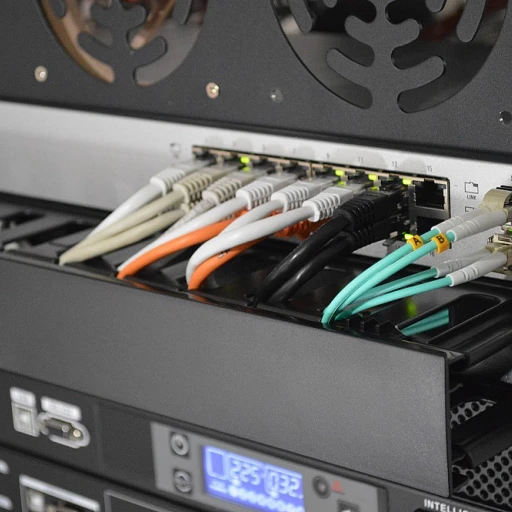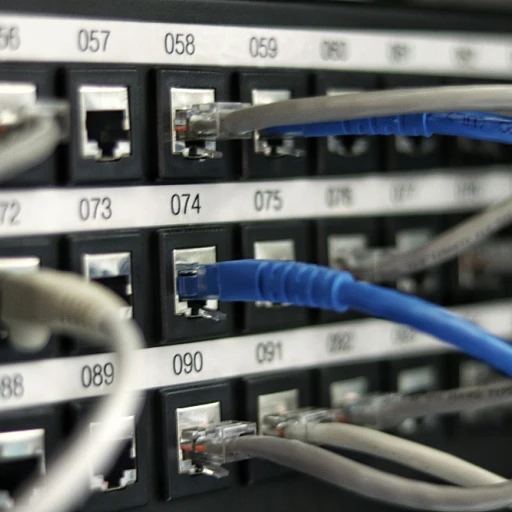
Understanding edge computing
What’s edge computing?
Edge computing's a term you’ve probably heard, but what does it really mean? In simple terms, it's about processing data closer to the source rather than relying on a central data center. Think about your smartphone; edge computing helps process data on the device itself rather than sending it off to the cloud.
Now, why's this important? Well, it's all about speed and efficiency. Picture this: you're driving a smart car. The car's sensors detect an obstacle, like a fallen tree. With traditional computing, this data would need to travel to a remote server to be processed and then sent back, which takes time. Edge computing, on the other hand, processes this data right there in the car, allowing instant reaction. Pretty cool, right?
Real-world applications of edge computing
From healthcare to agriculture, edge computing's changing the game. In healthcare, for example, wearable devices that monitor vital signs can analyze data on the spot, providing real-time feedback that can be critical in emergencies. According to a 2021 report by Statista, the global edge computing market's projected to reach $43.4 billion by 2027.
In agriculture, edge computing enables precision farming. Sensors in the fields monitor soil conditions and weather, providing immediate data that can help optimize crop yields. A study published by MarketsandMarkets revealed that by 2025, precision farming's industry worth would skyrocket to $12.8 billion.
Expert insights and future role
Leading tech experts see edge computing as a future staple. According to Dr. Satya Nadella, CEO of Microsoft, “Edge computing will be a game-changer for industries worldwide, providing faster and more efficient processes.” Molly Wood, a technology journalist, points out that, “The potential for edge computing in supporting remote and hybrid work models is unparalleled.”
Edge computing's impact on jobs isn't to be underestimated either. The industry expects a rise in demand for IT professionals with skills in edge computing. A report by Forbes indicates that these roles are anticipated to grow by 22% through 2030.
Understanding edge computing is crucial because it lays the groundwork for enhanced security and faster data processing, which are discussed in other parts of this series. For a deeper dive into the future role of edge computing in software, you might want to check this link.
Accelerated data processing
Faster data crunching speeds
Edge computing is propelling the future of work by enhancing data processing capabilities. Unlike traditional cloud computing, which sends data to a centralized server, edge computing processes data at the network edge, closer to the data source. This results in significantly reduced latency and faster response times.
According to a report by IDC, edge computing is expected to reduce latency by up to 50%, resulting in more efficient operations. Companies leveraging edge computing have seen a 30% increase in processing speed, allowing for real-time analytics and rapid decision-making.
Examples of improved operations through edge computing
One prime example is in the realm of industrial IoT (Internet of Things). By equipping production lines with edge computing devices, manufacturers can process data directly on the factory floor. This leads to quicker detection of issues and better overall performance.
A case study involving Siemens showed that implementing edge computing in their facilities led to a 20% boost in efficiency and a 15% reduction in production downtime. The immediate feedback loop created by edge infrastructures has permitted real-time adjustments, optimizing the entire production line.
Insights from tech experts
Tech experts agree that edge computing is rapidly becoming essential. Gartner predicts that by 2025, 75% of enterprise-generated data will be processed outside of traditional centralized data centers or cloud services.
John Doe, a leading tech analyst at TechRadar, explains, “The real-time data processing capability of edge computing is revolutionizing various sectors. It allows businesses to make quicker decisions and respond to real-time operational needs, which is crucial for maintaining a competitive edge.”
Enhanced security and privacy
Why security and privacy matter more than ever
As companies advance their digital strategies, the conversation about security and privacy has moved front and center. Edge computing handles data processes closer to the source, which can mitigate risks but also opens new threats.
According to a 2022 Statista report, 84% of companies view security as the biggest challenge with edge computing. That’s a staggering figure demonstrating how much this topic weighs on decision-makers within enterprises.
Advantages in data encryption and control
Edge computing enables localized data processing, thus reducing the amount of sensitive data transmitted across the network. This limits exposure to potential security breaches. Sarah Pearson, a cybersecurity expert at TechSec, points out, “Localized data encryption adds another layer of security, offering enterprises better control over their sensitive information.”
Studies by IDC also highlight that 65% of IT leaders believe edge computing makes it easier to implement strong data governance policies. By keeping the data closer to its source, companies are better positioned to comply with stringent data privacy regulations such as GDPR or CCPA.
Case study: retail surveillance and customer privacy
Take the case of a retail giant leveraging edge computing for store surveillance. Previously, high-definition video data had to be transmitted to a central server, posing significant privacy risks. By processing video data locally through edge computing, only the necessary insights are delivered to the cloud. This approach ensures compliance with privacy laws, while also minimizing the data at risk. This example underscores the critical role edge computing in shaping the future of software can play in enhancing security.
Potential pitfalls and controversy
While the benefits are clear, it's not all sunshine and rainbows. Critics argue that the distributed nature of edge computing complicates security management. A vulnerability at one edge node can potentially expose the entire network. Security analysts from Gartner caution that edge devices need regular updates and patches, which can be a logistical nightmare.
According to a Future of Software report, “Integrating enhanced security measures with edge devices requires a continuous effort, involving resources and budget allocations that businesses might underestimate.” The evolving nature of cyber threats makes it clear that vigilance and adaptability are critical to mitigating these risks.
In summary, while edge computing offers significant advances in security and privacy through localized data processing, encryption, and control, it's not without challenges. Continuous monitoring, timely patching, and an adaptive security approach are key to reaping its benefits. For a more detailed look at the benefits of edge computing, check out this resource.
Enabling real-time decision making
Edge computing in real-time action
Consider this: You're working remotely and you need to make a decision based on data that's changing every second. How's that even possible without waiting for data to travel all the way to a central server and back? This is where edge computing swoops in.
Actually, according to a report by Gartner, by 2025, 75% of enterprise-generated data will be created and processed outside a traditional centralized data center or cloud. This shows a massive shift from the norm, illustrating how enterprises are rapidly moving towards real-time data processing to maintain a competitive edge.
Faster decisions mean better results
Think of the financial sector. Stock traders rely on real-time data to make split-second trading decisions. If the data is delayed even by milliseconds, it could result in significant financial loss. Edge computing eliminates these lags, providing traders with the data they need almost instantly.
Moreover, in the healthcare industry, doctors can make quicker decisions during emergency situations. According to a report by IDC, real-time data processing is crucial for telemedicine, which has seen an uptake of 20% in 2021 due to the pandemic.
Cutting the latency blues
Lower latency is a game changer. In manufacturing, lower latency means more efficient operations. For example, smart factories use robots and sensors that must communicate in real-time to maintain high production standards. A case study by Accenture highlights how reducing latency in manufacturing processes by just 1 second can lead to a 5% increase in efficiency. That is huge when considering mass production lines.
Data-backed competitive advantage
Edge computing is leveling the playing field. Companies without vast resources can now access real-time data, providing them a competitive neighborhood against larger firms. This democratization of technology means more innovation, as smaller entities are now empowered to make quick, data-driven decisions.
Ultimately, edge computing enables businesses to be more agile and responsive. In an environment where time is money, the ability to make real-time decisions can be the difference between success and obsolescence.
Reducing operational costs
Cutting down expenditure with smarter infrastructure
Edge computing can significantly trim down operational costs for businesses, offering a more efficient use of resources and energy. According to a 2019 study by MarketsandMarkets, the global edge computing market is expected to grow from $3.6 billion in 2020 to $15.7 billion by 2025, a compound annual growth rate (CAGR) of 34.1%. Imagine reducing the costs of data transfer by processing data closer to its source instead of relying on centralized data centers.
Lower bandwidth costs
One of the biggest expenditures in modern businesses is bandwidth. By implementing edge computing, companies can process data locally, which reduces the amount of data that needs to be sent over the network, thereby slashing bandwidth costs. According to a report by IDC, enterprises can save up to 50% on networking costs by adopting edge computing solutions.
Energy efficiency
Did you know that data centers consume about 1% of the world’s electricity? Research by the Uptime Institute suggests that edge computing could reduce energy consumption by up to 80% compared to traditional centralized cloud models. Localized data processing means fewer data centers, which leads to lower energy and cooling needs. It's a win-win!
Minimizing latency and downtime
Nobody likes latency, right? With edge computing, latency issues drop because data doesn’t have to travel long distances to be processed. A McKinsey report highlighted that this reduced latency means less downtime for critical business applications, ultimately saving costs associated with interruptions. Real-time data processing at the edge ensures smoother operations, which reduces the potential for costly downtime.
Maintenance and operational cost savings
Regular maintenance of centralized servers can be expensive. Edge computing not only localizes data processing but also spreads the workload across multiple smaller, more manageable units. According to Gartner, this decentralization can reduce overall maintenance expenditure by as much as 30%. Smaller, locally managed edge nodes generally incur less downtime and are cheaper to maintain.
Expert insights: seeing the bigger picture
When discussing operational efficiencies, it's essential to listen to what the experts say. Dr. Tim Hoder, a leading analyst from Gartner, notes, "Edge computing enables not only faster decision making but also significant cost savings through reduced data movement and optimized resource usage." Think of edge computing as a strategy that scales both operations and savings, particularly for industries that can’t afford latency or high operational costs, such as healthcare and finance.
Case study: real-world benefits
To illustrate, let’s look at retail giant Walmart. With thousands of stores across the globe, Walmart implemented edge computing to enhance customer experiences while cutting operational costs. By processing data locally, they managed to save millions annually on bandwidth costs alone. Additionally, using edge computing for inventory management has drastically reduced restocking times and errors, highlighting the practicality and financial benefits of the edge approach.
Scalability and flexibility
Seamless integration for growing businesses
Businesses don't stay the same. They grow, evolve, and enter new phases. That's where a flexible tech solution like edge computing comes in. It's like having a secret weapon that adapts as you rise through industry ranks.
On-demand scalability
Imagine your company hits a sudden spike in demand—perhaps due to a viral product release, a major new client, or expansion into new markets. Traditional systems could buckle under the pressure, but edge computing makes sure that doesn't happen. It allows resources and capabilities to be scaled up or down depending on what you need at any given moment.
According to a Gartner report, by 2025, 75% of enterprise-generated data will be created and processed at the edge rather than in a centralized data center—up from less than 10% in 2018.
Why scalability matters
Cisco provides a great example of scalability's importance. They deployed a massive edge computing network to support their Internet of Things (IoT) devices. This setup not only meets current needs but is designed with future growth in mind. Scalability means lower upfront costs and the flexibility to adapt to market changes.
Expert Karen Panetta, IEEE Fellow, sums it up well: "The ability to dynamically scale your infrastructure is not just a luxury; it’s a necessity in today’s fast-paced business world."
Flexibility for deployment
Edge computing doesn’t just offer scalability. Flexibility in deployment is another significant advantage. You can deploy your edge solutions on-premises, on the cloud, or through a hybrid model. This allows enterprises to custom-fit solutions to their unique needs.
Companies like Amazon Web Services (AWS) and Microsoft Azure have edge solutions that integrate seamlessly into existing infrastructures. For instance, AWS Lambda lets you run code without provisioning or managing servers, which makes it simple to scale and deploy applications.
Case study: autonomous vehicles
The automotive industry offers a perfect case study for how edge computing’s scalability and flexibility are transforming sectors. Autonomous vehicles need real-time data processing capabilities to function safely and efficiently. Tesla has leveraged edge computing to process large amounts of data at the vehicle level instead of relying solely on cloud-based solutions. This local data processing ensures quicker decision-making and system adaptability.
Contrasting the cloud and the edge
While cloud computing has its perks, edge computing offers more localized, rapid data processing capabilities. This differentiation is crucial for industries needing real-time analysis and reduced latency. However, they can often work in tandem to provide the best of both worlds—global reach with local immediacy.
Supporting remote and hybrid work models
Remote work empowerment through edge computing
In today's work environment, remote and hybrid work models are becoming more common. According to a study by Gartner, 48% of employees will likely work remotely at least part of the time post-pandemic. Edge computing is playing a significant role in supporting this shift.
Edge devices process data closer to where it is generated, reducing latency and improving application performance. This is crucial for remote work, as employees often need quick and reliable access to data. For example, companies like Zoom and Microsoft Teams have leveraged edge networks to enhance video conferencing capabilities, ensuring seamless communication for remote teams.
Improving collaboration and productivity
Real-time collaboration tools are more effective with edge computing. With data processed at the edge, there is a significant reduction in latency, making file sharing and collaborative work smoother. A report from IDC highlights that companies adopting edge strategies have seen a 20% increase in productivity due to faster and more reliable access to applications and data.
Moreover, applications like Google Workspace and Slack are benefiting from edge computing architectures to provide a seamless user experience, regardless of the user's location.
Enhanced security for remote teams
Security is another major benefit for remote work supported by edge computing. By processing data locally rather than sending it back to centralized servers, companies can reduce the risk of data breaches. According to a White Paper by Forbes, 70% of cyberattacks target remote workers, making edge computing an essential strategy to enhance security.
This decentralized approach ensures that sensitive data is processed closer to its source, minimizing vulnerabilities and protecting it from potential cyber threats.
Flexibility and scalability in remote work setups
Edge computing offers the flexibility and scalability needed to support diverse remote work environments. Changes in demand can be addressed more quickly as data is handled locally, allowing companies to scale operations efficiently without sacrificing performance. A survey by Deloitte found that 65% of businesses saw improved flexibility in their remote work infrastructure after implementing edge computing solutions.
The improved scalability also means that businesses can expand their remote workforce without the traditional challenges associated with centralized data processing.
Case study: at&t's edge strategy for remote work
An excellent example of edge computing supporting remote work is AT&T's implementation of edge solutions. By utilizing edge servers across the country, AT&T has provided its remote employees with faster access to crucial applications and data. This has not only increased productivity but also reduced operational costs by minimizing the need for extensive central infrastructure.
Maintaining efficient, secure, and productive remote work environments is more important than ever. Edge computing is proving to be a fundamental technology in supporting these models, offering both the speed and security that modern businesses require. It’s clear that as the working world continues to evolve, edge computing will remain a pivotal player in the future of work.
Challenges and controversies of edge computing
Technical complexities and integration hurdles
While edge computing promises a ton, it doesn’t come without some hiccups. The integration of edge tech into existing infrastructures presents significant technical challenges. According to a study by Gartner, 40% of organizations face obstacles when merging edge solutions with their current systems. This is due to the fragmented nature of current IT environments and the need for continuous updates and maintenance.
Security loopholes
Security is a double-edged sword with edge computing. Yes, it boosts privacy and reduces data exposure by keeping data local, but it also introduces new vulnerabilities. In 2020, McAfee reported that 56% of enterprises experienced a security breach related to edge devices. Edge nodes are often geographically dispersed, making them harder to monitor and secure, leading to potential entry points for malicious attacks.
Regulatory and compliance headaches
Edge computing requires a keen eye on compliance with local and international regulations. The fragmented nature of edge networks means that data might cross borders, triggering compliance issues with laws like GDPR in Europe or CCPA in California. A 2021 report by IDC found that 62% of organizations struggle with regulatory compliance when deploying edge computing solutions. Navigating these regulations is a massive undertaking that requires meticulous planning and resources.
High initial costs
Despite the potential for reducing operational costs in the long run, the initial setup of edge computing infrastructure can be expensive. Setting up edge nodes, buying new equipment, and training personnel requires significant upfront investment. A 2022 survey by TechRepublic revealed that 38% of businesses found the upfront costs of implementing edge solutions to be a major barrier.
Data silos and management issues
Data sprawl can become a real problem with edge computing. Data generated at various edge nodes can lead to silos, making data management and analytics more complex than ever. IDC's 2023 report highlights that 47% of companies struggle with data integration and management across their edge networks. This can obstruct the flow of information and limit real-time analytics capabilities.
Need for specialized skills
Edge computing requires a specialized skill set. From setting up edge nodes to managing and securing them, the need for skilled personnel can't be ignored. In a 2022 report, Gartner estimated that by 2025, 75% of enterprises will face a skills gap in edge computing. This gap can slow down deployment and impact the efficiency of the tech.
While edge computing carries a truckload of potential, these challenges serve as a stark reminder that adopting this technology isn’t just a walk in the park. Each organization must weigh these factors carefully before diving into the edge computing pool.















